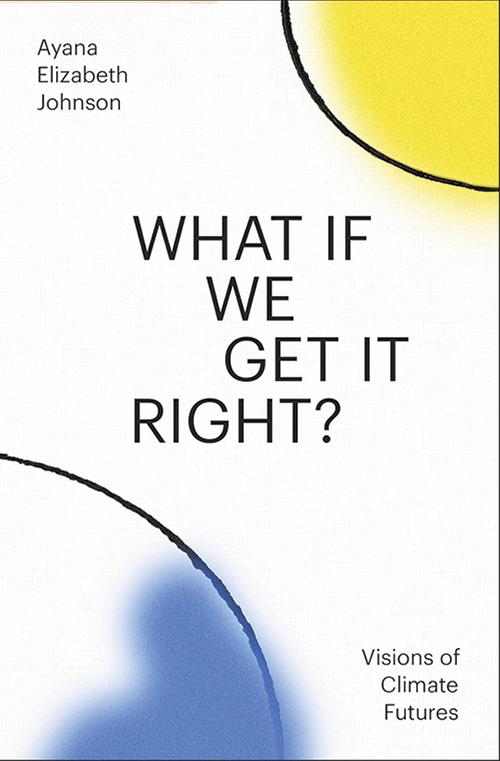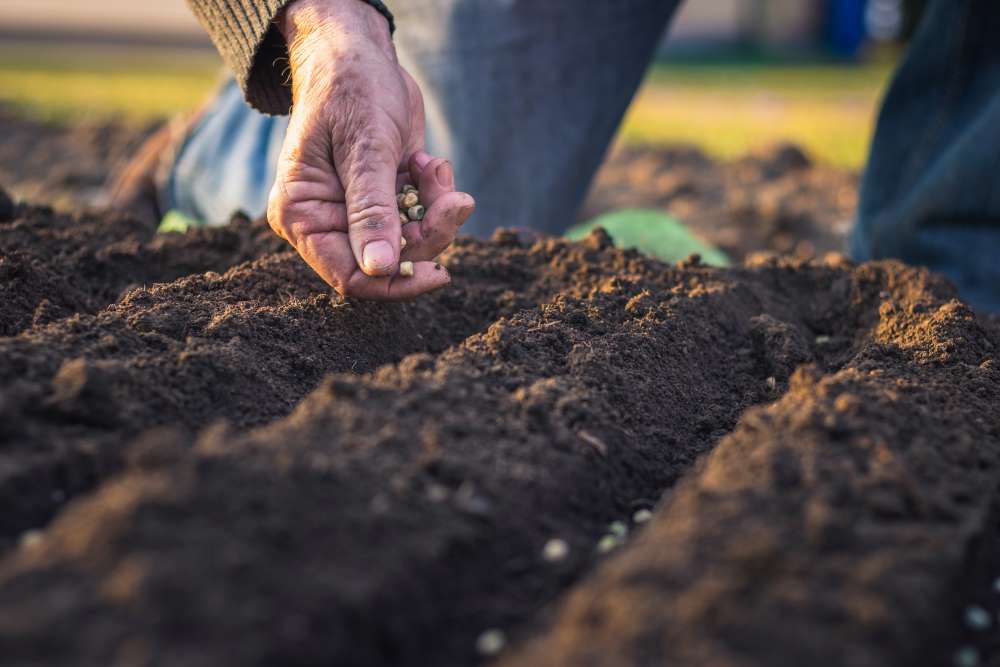
What If We Get It Right? Visions of Climate Futures
Reviewed by Ruah Swennerfelt
August 1, 2025
By Ayana Elizabeth Johnson. One World, 2024. 496 pages. $34/hardcover; $13.99/eBook.
This book gives me hope. It is a series of interviews (that seem like conversations), poems, and author comments about visions for a sustainable climate future. Ayana Elizabeth Johnson shares 20 interviews from a wide variety of people with many interests and skills, and groups them around themes such as possibility, divestment, community, and transformation. It is not a sit-down-and-read-through type of book. Each conversation is to be savored for the amazing insights and commitments of both Johnson and the interviewees.
The format is unusual, somewhat like a textbook, but with Johnson drawing attention to important parts with markings in the margins: hearts for “poignant and heartfelt bits,” asterisks to indicate “a key insight or possibility,”, and exclamation points for “key points of concern.” And sometimes she underlines “key terms that point the way forward.” A marine biologist, policy expert, and teacher, Johnson brings her understanding of what the future might hold and asks questions that are filled with understanding the interviewee’s subject. The reader can pick and choose a chapter or themed section that is of immediate interest and then return to what was missed.
I especially appreciated the chapter with Judith D. Schwartz, a science journalist who shares her insights about “nature-inspired solutions,” which ask, “What is nature doing? What are the processes that bring a given ecosystem into health, that support the synergies among different species?” Schwartz gives the example of beavers, which she calls “nature’s engineers,” creating dams that help landscapes absorb more water. To which Johnson replies, “It’s such a lovely thought that beavers are part of the answer, not an annoyance.” Each conversation is illuminating and engaging.
There are conversations with economists, tech experts, film makers, educators, farmers, journalists, politicians, and environmental activists—just a sampling of the depth and breadth of this book. I didn’t always agree with the outlooks of the interviewees, but reading this book helped me to better understand their points of view. That’s a good place to grow from.
I really liked Johnson’s “what if?” style of approaching the subjects. It reminded me of Transition Movement cofounder Rob Hopkins’s 2019 book, From What Is to What If, which has inspired my way of looking at a dilemma. Instead of getting bogged down in, “That’s how it’s always been done,” there may be some new insight if we ask, “What if?”
Johnson considers the “What if . . . ?” frame of mind in the introduction: “A mind-expanding question, often asked with a twinkle in the eye. An invitation to imagine. And goodness do we need more imagination right now, to create clearer visions of desirable climate futures.”
Learning the ideas and knowledge of experts in their varied fields, readers may be led to learn more about that topic by researching further. It’s like a sampler of current climate thinking and how a different trajectory of our lives may be possible.
Ruah Swennerfelt is a member of Middlebury (Vt.) Meeting and is clerk of the New England Yearly Meeting Earthcare Ministry Committee. She is also serving on the Third Act Faith Coordinating Committee and co-coordinator of Sustainable Charlotte Vermont. She and her husband are homesteaders on lands that once were home to the Abenakis.



Comments on Friendsjournal.org may be used in the Forum of the print magazine and may be edited for length and clarity.